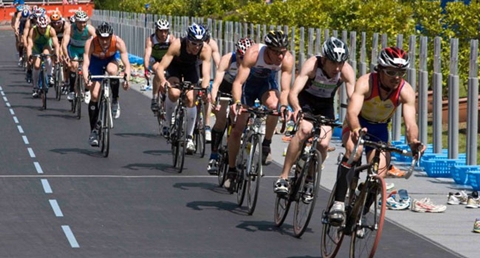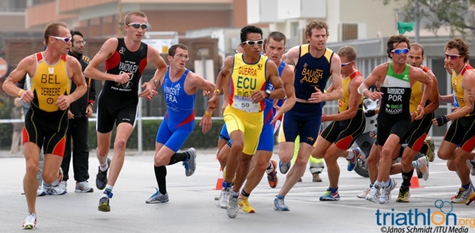Smooth Freestyle Swimming Technique
It is estimated that 70% of your swim speed comes from stroke mechanics and only 30% from the muscles. Swim technique for freestyle swimming, the most popular of the four main swim strokes, can vary somewhat depending upon whether you are a short course, long course or open water distance swimmer. Good Ironman 70.3 or full Ironman Triathlon swimming technique incorporates many of the swim tios below.These below tips on freestyle swimming technique will help you become more efficient, swim faster and help prevent swimming injuries. However regardless of whether you swim short or long course, or open water, good swimming technique seeks to achieve the following:
- Streamlined body with legs and torso high in the water to lessen drag.
- Chest leaning downward or ‘Pressing the Buoy’. This action tends to lift the legs upward into a streamlined position.
- Long forward stretch of the arm that reaches and extends your length by several inches.
- Early catch of the water with a high elbow focused on propelling the body forward that creates your hand and your forearm (not just your hand) as your paddle. A high early elbow bend helps set up the early catch and using both the hand and forearm.
- Accelerate your hand during the second half of each stroke.
- Watch your traction as you anchor and pull with your hand and forearm. If your hands are going faster than your body is moving in the water, your hand and forearm are slipping and not gripping the water. This is probably due to a low elbow position or slipping arm.
- Long follow through on the down stroke to get the maximum propulsion from a each stroke. Dropping the shoulder at the very end of the stroke lengthens the stroke a few inches.
- Streamlined kick that stays within the body’s shadow so as to not create a drag. This is accomplished by relying more on the hips to start the kick and less on knee flexion. Toes should be pointed to minimize drag.
- Head streamlined with the body that turns to the side instead of upward or forward when breathing, as lifting the head up tends to lead the body out of a streamlined position.
- Body roll from stroke to stroke that lessens drag and is the initial power behind each stroke. The longer you stay on your side in each stroke cycle the faster and farther your body will travel. This roll rhythm movement starts in the body’s center or core and uses the hips. It is recommended to lead each stroke with the hips.
- Take deep satisfying breaths and exhale under water.
- Long course swimmers are encouraged to learn ‘front quadrant’ swim technique which recommends beginning each down stroke after the recovering arm has past the head.





